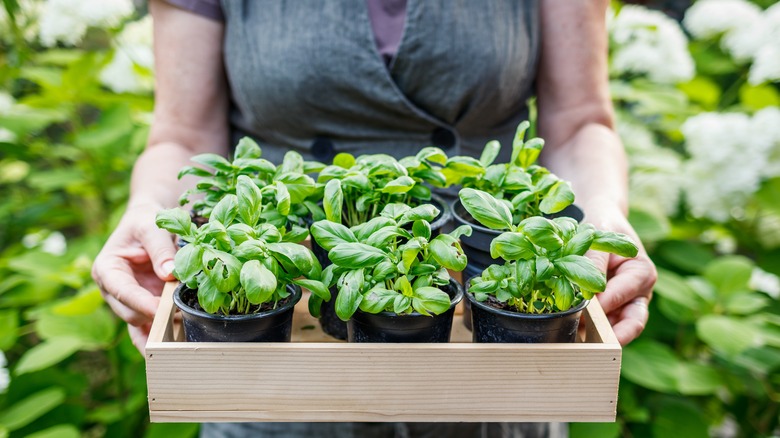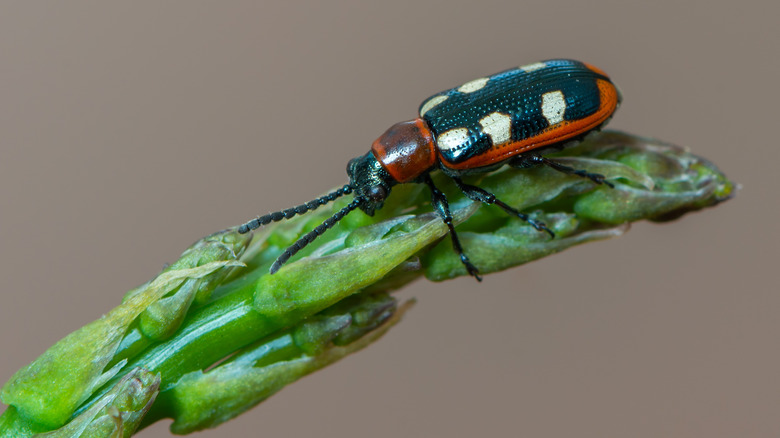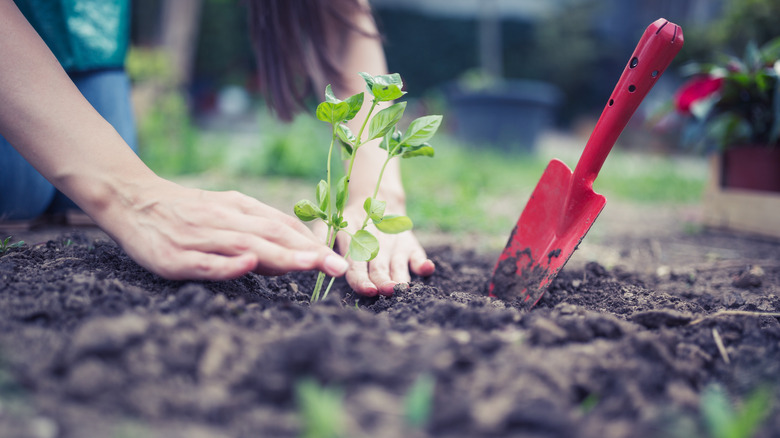The Tasty Veggie You'll Want To Consider Planting Alongside Your Basil
Basil is a mighty herb that tastes great and is widely used in the culinary world to add freshness and flavor to dishes. The herb is loaded with magnesium and vitamin K, and is highly versatile for cooking — the leaves can be thrown into pasta dinners, specialty sandwiches, and delicious soups. And beyond its usefulness in the kitchen, basil is equally as beneficial in the garden.
With its pungent sweet smell, basil is your garden's best natural defense against bugs. Pests dislike the taste and aroma of the herb, so they stay away, which can be incredibly helpful to neighboring plants. Because of this, the herb is common for companion planting, a practice of planting two plants close to each other for healthy crop yields and reduced pest infestations. With that said, basil does particularly well next to a vegetable that is a household favorite.
Basil is a dear friend to asparagus and protects it from asparagus beetle by keeping the insect from feeding on the vegetable's shoots and spears. Here's what you need to know about this match made in heaven.
Basil's strong odor repels pests and attracts beneficial insects
The common asparagus beetle can be identified by its mostly bluish-black colored back with cream-colored spots and red sides near its wings. A sign your crop has been infested by the beetle is that the tips of your asparagus will turn brown.
The strong smell of basil confuses the asparagus beetle and will keep them from eating and damaging your asparagus crop. For best results, it is recommended to gently brush the basil leaves with your hands as you garden, which helps release their natural oils and aroma. The practice is a great option for gardeners who are looking for a more natural way to get rid of pests and want to avoid using pesticides.
Further, basil is an easy way to bring good insects into your garden that will enhance the overall growing environment of your asparagus crop. The herb attracts pollinators such as bees and butterflies, which keeps neighboring plants thriving and soil structure healthy. The herb also attracts predatory wasps that help control pest populations by eating larvae, which is key to preventing pests from reaching full maturity and laying even more eggs.
Basil has similar growing requirements as asparagus
Basil and asparagus naturally grow well next to each other and keep one another healthy. They both prefer at least six hours of sun a day, thrive in well-drained soil, and need to be watered about once a week. Plus, basil's small size does not take up the nutrients and space asparagus needs to thrive, so the pair of companion plants do not compete for valuable resources such as water.
While it's clear that basil helps asparagus grow healthy, it should not go unsaid that asparagus helps basil thrive too. The tall spear-shaped vegetable provides needed shade to cover sun-sensitive plants such as basil, so the herb's leaves do not burn from harsh direct sunlight during peak afternoon hours. When planting basil next to your asparagus, you can either plant basil starts or seeds between your rows of asparagus or in containers placed nearby. Give it a try!


